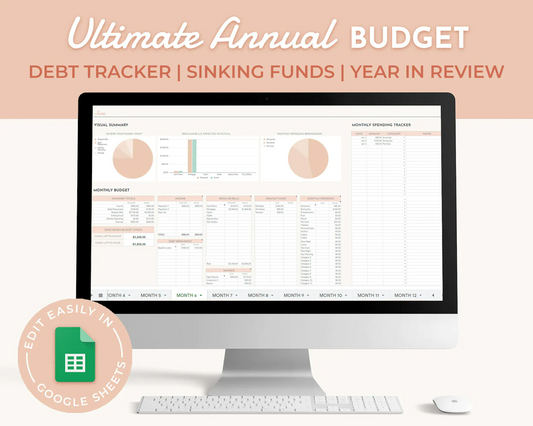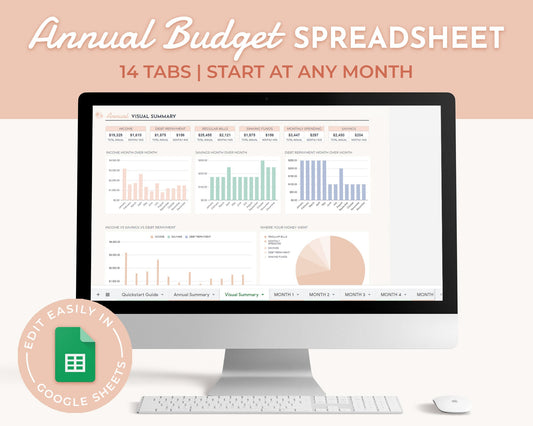Saving money is more than just cutting costs. It's about creating a path to financial stability. This guide will show you effective ways to save money. Whether it's managing bills or saving for emergencies, smart financial planning can help you reach your goals.


Everyday challenges like unexpected bills or high expenses can slow you down. This article will help you overcome these obstacles. It offers practical tips for every step of your financial journey. From tracking your income to automating savings, you'll find easy steps to make saving a part of your routine.
Key Takeaways
- Learn money saving methods to build savings effectively.
- Discover saving strategies aligned with personal finance goals.
- Overcome common obstacles through financial planning.
- Turn saving into a habit with actionable steps.
- Get tools to improve personal finance management.
Why Developing Effective Money Saving Methods Matters
Effective money saving methods are more than just cutting corners—they’re tools that shape your future. Let’s explore why these strategies are essential for your life.
The Financial Security Benefit
An emergency fund acts as your first line of defense. Saving 3-6 months of expenses shields you from job loss or medical bills. For example, 67% of Americans face unexpected costs yearly, but 40% can’t cover a $400 emergency (FDIC 2023). This financial security prevents debt cycles and maintains stability.
How Savings Impact Your Mental Wellbeing
“Financial stress reduction improves focus and emotional health.”
Money worries rank among top stressors for 72% of adults (APA, 2022). When you save, you free your mind. Less anxiety means better sleep and clearer thinking. Prioritizing mental health and money balance creates space for life’s joys, not just survival.
Building Wealth Through Consistent Saving
Small, regular deposits grow into significant gains. Here’s how time and interest work:
| Annual Savings | 10 Years | 20 Years |
|---|---|---|
| $500/month | $78,000 | $180,000 |
| $200/month | $31,000 | |
| $72,000 |
Compound interest turns savings into wealth building engines. Start small and watch growth accelerate.
Assessing Your Current Financial Situation
Starting a budget assessment is the first step to managing your money. You need to know where your money goes. Start by making a list of all your income and expenses, no matter how small.
This expense tracking helps you see where your money is going. You might find hidden spending that's eating into your savings.
Tracking Your Income and Expenses
Apps like Mint or GoodBudget can help you budget however often they are often set up and forgotten about. If you weren't taught about finances when you were young, it would be best to start by making a paper budget or budgeting spreadsheet so that you can learn how budgeting works. A quick financial audit shows where you can cut back.
Identifying Financial Leaks in Your Budget
A financial audit finds monthly leaks like unused subscriptions or ATM fees. Ask yourself, “Do I really use that streaming service?”. Canceling unused services can save you $50+ a month. Look at bank statements for small charges that add up.
- Check for auto-renewing subscriptions
- Compare bank fees across institutions
- Track impulse purchases
Setting Realistic Savings Goals
Set savings goals based on what you can afford after bills. Start with saving $500-$1,000 for emergencies. Then aim for bigger goals like a vacation or down payment. Use the 50/30/30 rule to guide your spending: 50% for needs, 30% for wants, 20% for savings.
“Small consistent steps create big financial wins.”
Update your goals every quarter if your life changes. Celebrate every small savings victory to keep yourself going.
Creating a Budget That Actually Works
Effective practical budgeting means having a flexible budget plan that fits your life. Many budgets fail because they don't account for life's surprises. Instead, aim for systems that adjust to your lifestyle.
| Method | How It Works | Best For |
|---|---|---|
| Zero-Based Budgeting | Assign every dollar a purpose each month | Detail-oriented planners |
| Envelope System | Cash allocation for spending categories | Cash users avoiding overspending |
| Budget Templates | Pre-made structures for quick setup | Beginners needing guidance |
"A budget should feel like a roadmap, not a cage." - Financial Wellness Experts
Begin with a realistic financial planning mindset. Use free budget templates from apps like Mint or EveryDollar to get started. Include room for unexpected costs like holidays or car repairs. Adjust your budget every month to stay on track.
Follow a 3-step plan: 1) List all your income sources 2) Match spending to your priorities 3) Set aside 5% for surprises. Remember, a budget is a tool to make your money work better, not harder.
The 50/30/20 Rule for Smart Money Management
Managing money starts with a clear plan. The 50/30/20 budget rule splits income into three parts. 50% goes to essential expenses, 30% to discretionary spending, and 20% to savings allocation and debt management. There are other ratios like 90/5/5 or 70/20/10 that may work better in cases of higher expenses or lower income. This helps focus on needs over wants and builds financial stability.
“Budgeting isn’t about deprivation—it’s about choosing what matters most.”
Allocating 50% to Needs
Essential expenses include housing, utilities, groceries, and minimum debt payments. To stay under 50%, consider these steps:
- Rent or mortgage ≤ 30% of income
- Shop for generic groceries to cut food costs
- Negotiate utility rates or switch providers
Limiting Wants to 30%
Discretionary spending covers dining out, subscriptions, and entertainment. Try:
- Meal prep to reduce eating out
- Cancel unused streaming services
- Host potlucks instead of dining out weekly
Committing 20% to Savings and Debt Repayment
Divide the final 20% between emergency funds and debt repayment. For debt management, focus on high-interest balances first. Example allocation:
- 10% to emergency savings
- 10% to credit card or student loan payments
Flexibility is key. Adjust percentages if housing costs are high, but keep the core idea: protect savings and tackle debt aggressively.
Everyday Money Saving Methods to Implement Today
Small changes can make a big difference in your budget. Try these actionable tips to save money without sacrificing comfort.
✅ Reducing Food and Grocery Expenses
Start with meal planning to avoid overspending at the store. Use apps like Flipp to compare grocery savings tips and digital coupons. Buy store-brand items and freeze leftovers to cut waste.
✅ Cutting Down on Utility Costs
Lower utility bill reduction by adjusting your thermostat 2° cooler in winter, 2° warmer in summer. Switch to LED bulbs and fix leaky faucets to save on water. Check if your state offers energy assistance programs like Low-Income Home Energy Assistance Program (LIHEAP).
✅ Transportation Savings Strategies
Improve fuel economy by keeping tires inflated and avoiding idling. Use apps like GasBuddy to find cheap gas. Carpool with coworkers or explore public transit passes for routine trips.
✅ Entertainment on a Budget
Discover affordable entertainment like free museum days, park picnics, or library events. Use discount strategies like Groupon for dining or movies. Host game nights at home instead of eating out.
Automating Your Savings for Consistent Growth
Automation makes saving easy and automatic. Start by paying yourself first—let technology do the work. Automatic savings transfers, direct deposit splitting, and round-up savings apps help your money grow without effort.

- Set up automatic savings transfers to move funds right after payday.
- Ask employers about direct deposit splitting to send parts of your paycheck to savings.
- Use apps like Acorns or Digit to round-up savings from daily buys.
| Method | How It Works | Benefits |
|---|---|---|
| Automatic Savings Transfers | Schedule fixed amounts to move to savings accounts | Builds discipline with set and forget saving |
| Direct Deposit Splitting | Split paychecks into checking and savings before funds hit your account | Guarantees savings are prioritized first |
| Round-Up Apps | Rounds purchases to the nearest dollar, saving the difference | Turns small change into meaningful growth |
Use these tools with a set and forget saving mindset. For instance, split deposits into an emergency fund, vacation account, and retirement. Adjust as income changes every quarter. Automation takes the guesswork out, letting your money grow while you live life.
Smart Debt Management Strategies
Smart debt management turns debt into a tool for long-term savings. Using the debt snowball or debt avalanche can cut interest costs and free up cash. Start by reviewing all debts and goals.
"Your first step is to list all debts with their interest rates. Knowledge is power when creating a plan."
Prioritizing High-Interest Debt
Choose between two proven approaches:
- Debt Snowball: Pay off smallest balances first. Quick wins boost confidence, even if interest rates aren’t highest.
- Debt Avalanche: Focus on highest interest debts. Saves more money long-term but requires patience.
Negotiate lower rates with lenders using interest rate negotiation tactics. Even a 1% reduction can save hundreds.
Debt Consolidation Options
Consolidation loans combine debts into one payment. Options include personal loans, home equity loans, or nonprofit credit counseling programs. Compare terms carefully to avoid hidden fees.
Using Balance Transfers Effectively
Balance transfer strategies can pause interest on credit card debt. Look for 0% APR offers but pay balances before the promotional period ends. Avoid opening new cards just to transfer debt.
Leveraging Technology for Better Money Management
Modern financial technology makes saving and spending easier.

Our Best Budgeting Tools
Using financial technology with smart habits makes saving easy. Try these tools to move closer to your goals without much effort.
Advanced Money Saving Techniques for Long-Term Growth
Starting with daily savings is just the first step. Advanced strategies can make small savings grow into big wealth. Investment strategies for beginners begin with learning about tax-advantaged accounts. These accounts help your savings grow without losing to taxes.
Compound interest is a silent but strong force. For instance, investing $100 a month at 7% interest can grow to over $40,000 in 40 years. This is a key part of wealth building strategies. It works best when you start early.
Retirement planning means making consistent, even small, contributions. This helps keep pace with inflation.
“Compound interest is the eighth wonder of the world. He who understands it, earns it; he who doesn’t, pays it.” — Attributed to Albert Einstein
Beginners can start with low-cost index funds or robo-advisors. Employer retirement plans often offer free matches. This free money boosts your savings right away.
Regularly reviewing your strategy is important. Adjust it as your goals or risk tolerance change. Even small steps today can lead to a stable future.
Building Multiple Income Streams to Accelerate Savings
Adding more income streams can boost savings without reducing your budget. Look into side gig ideas and passive income sources that match today's lifestyle.
“Every dollar earned beyond your regular income is a dollar closer to your goals.”
Side Hustle Opportunities with Low Start-up Costs
Platforms like Upwork and TaskRabbit offer freelance opportunities in writing, design, or local services. Try driving for Lyft part-time or sell handmade goods on Etsy. Most side gig ideas need $0–$500 to start and take 5–10 hours a week.
Passive Income Ideas for Busy People
- Dividend stocks via apps like Robinhood or Acorns
- Create affiliate blogs using WordPress or Squarespace
- Rental income through Airbnb or property leasing
Turning Hobbies into Income
Turn your passions into supplemental income. Teach guitar lessons via TakeLessons, sell photography on Adobe Stock, or monetize a blog about cooking. Focus on hobby monetization that matches your skills.
| Type | Examples | Effort |
|---|---|---|
| Side Gigs | Freelance writing, rideshare driving | 10–20 hours/week |
| Passive | Stock dividends, rental properties | 1–2 hours/week |
| Hobby-based | Online courses, print-on-demand | Varies by project |
Conclusion: Your Path to Financial Freedom Through Consistent Saving
Your journey to financial freedom starts with small, thoughtful choices. Changing how you think about money helps you save more. Even small actions, like tracking your spending or setting up automatic savings, are important steps.
Start by checking your budget and setting up automatic savings. Use apps like Mint or YNAB to track your spending. Also, work on paying off debt and explore new income sources slowly.
Don't worry about setbacks. They don't erase all your hard work. Check your goals every few months and adjust your plan as needed. Focus on what works for you, whether it's cutting costs or earning more.
Getting financially independent takes time and steady effort. Start today by taking one small step, like saving more or cutting a bill. Every action you take adds up over time, leading to long-term security. Your journey is yours alone, so take it one step at a time.
FAQ
What are some effective methods to save money quickly?
To save money fast, start with a budget and track your spending. Look for ways to cut down on unnecessary expenses. Use deals and discounts when shopping. Automate your savings to make it a habit.
How can I make my budget more effective?
Customize your budget to fit your lifestyle. Try different methods like the envelope system or zero-based budgeting. Remember to account for irregular expenses and be flexible. It's okay to adjust if you face setbacks.
What is the 50/30/20 rule and how does it work?
The 50/30/20 rule divides your income into three parts. 50% goes to needs, 30% to wants, and 20% to savings and debt. It's a simple way to manage your finances and can be tailored to your needs.
How can technology help with saving money?
Technology offers tools to simplify money management. There are also tools that analyze your spending to suggest savings amounts.
What are some common pitfalls when trying to save money?
Common mistakes include setting unrealistic goals and not tracking expenses well. It's important to enjoy life while saving. Finding a balance is key to success.
Is it better to save or pay off debt first?
It depends on your situation. If your debt has high interest, pay it off first. But, having a small emergency fund is also crucial. Finding the right balance is important for your financial health.
How do I identify financial leaks in my budget?
Start by tracking your expenses for a month. Look for unused subscriptions, impulse buys, or unnecessary fees. Analyze your spending to find areas to cut back without sacrificing essentials.
What are passive income ideas for someone busy?
Busy people can explore passive income through dividend stocks, digital products, or blogging. Rental income and peer-to-peer lending are also options. These can generate income without constant effort.
How can I automate my savings?
Set up direct transfers from your checking to savings after paydays. Many banks offer round-up tools to save spare change. Automating your savings makes it easier and ensures consistent progress towards your goals.
What should I focus on for long-term financial growth?
For long-term growth, contribute to tax-advantaged accounts like 401(k)s or IRAs. Focus on consistent saving and learn about investing. Stay informed about inflation to adjust your strategies and grow your wealth.



